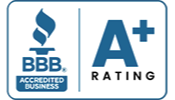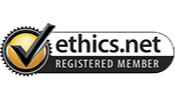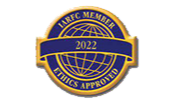As the year winds down, this season is about more than celebrations and reflection—it’s an opportunity to make sure your finances are in top shape. By taking smart, proactive steps before December 31, you can strengthen your retirement savings, reduce your tax burden, and position yourself for a more secure financial future.
At Agemy Financial Strategies, we emphasize the importance of reviewing, adjusting, and planning before the year ends. Below, we outline the key financial tasks that every investor, retiree, or near-retiree should consider before the calendar turns.

1. Maximize Your Contributions to Retirement Accounts
One of the most effective strategies for building wealth and reducing taxes is to maximize contributions to your retirement accounts. This includes employer-sponsored plans like a 401(k), 403(b), or 457(b), as well as Individual Retirement Accounts (IRAs).
Why This Matters
Contributions to traditional 401(k)s and IRAs are typically tax-deductible, meaning they reduce your taxable income for the year. Maximizing contributions not only lowers your current tax bill but also accelerates the growth of your retirement savings through the power of compounding.
For 2025, the contribution limits are as follows:
- 401(k), 403(b), 457(b), and TSP plans: $23,000, with an additional catch-up contribution of $7,500 if you’re age 50 or older.
- IRA: $7,000, with a $1,000 catch-up contribution for those 50 or older.
Action Steps Before December 31
- Review your current contributions: Check how much you have contributed so far this year.
- Increase your contributions if possible: Even small increases can make a significant difference over time.
- Coordinate with your employer: If contributing through a workplace plan, help ensure payroll adjustments are submitted early enough to take effect before the year ends.
Maximizing contributions is not just about tax savings; it’s about committing to your long-term financial security. Even a few thousand dollars can compound into a substantial nest egg over decades.

2. Take Required Minimum Distributions (RMDs)
For those who are 73 or older, or those who have inherited an IRA, Required Minimum Distributions (RMDs) are a critical end-of-year task. Failure to take RMDs can trigger steep tax penalties.
What Are RMDs?
RMDs are the minimum amounts that the IRS requires you to withdraw from your retirement accounts annually. These rules apply to traditional IRAs, SEP IRAs, SIMPLE IRAs, and most employer-sponsored retirement plans.
Why Timely Withdrawal Is Crucial
- Avoid penalties: Not taking your RMD by December 31 can result in a 25% penalty on the amount that should have been withdrawn.
- Plan for taxes: RMDs are generally subject to ordinary income tax, so planning the distribution in advance can help manage your tax bracket.
- Investment strategy: By scheduling your RMDs thoughtfully, you can avoid forced liquidation of investments during unfavorable market conditions.
Action Steps Before December 31
- Calculate your RMD: Many financial institutions provide tools or assistance to calculate your RMD.
- Schedule withdrawals early: Don’t wait until the last week of December. Scheduling in advance helps ensure funds are available and processed.
- Consider charitable donations:Qualified charitable distributions (QCDs) allow individuals over 70½ to donate up to $100,000 directly from their IRAs to charity, which can satisfy the RMD requirement while reducing taxable income.
Timely RMDs can help protect you from penalties and maintain a predictable cash flow in retirement.
3. Execute Roth IRA Conversions

Roth IRA conversions are a powerful tax planning tool that allows you to move assets from a traditional IRA or 401(k) into a Roth IRA. These conversions have specific tax implications and deadlines, making December 31 a critical target for completion.
Why Roth Conversions Matter
- Tax-free growth: Once in a Roth IRA, future qualified withdrawals are tax-free.
- Estate planning benefits:Roth IRAs do not require RMDs during the account owner’s lifetime, making them an effective vehicle for legacy planning.
- Flexibility in retirement: Roth IRAs offer tax diversification, allowing retirees to manage taxable income in retirement strategically.
Timing Is Key
To count for the 2025 tax year, any Roth conversions must be executed by December 31, 2025. Waiting until the next calendar year means the conversion counts for 2026, potentially affecting your tax planning strategy.
Action Steps Before December 31
- Consult your financial advisor: Analyze the tax impact and ensure the conversion aligns with your long-term strategy.
- Decide the amount to convert: You don’t have to convert your entire traditional IRA balance. Converting smaller amounts over several years can help minimize tax impact.
- Execute the conversion: Ensure your financial institution processes the transfer in time to count for the 2025 tax year.
Roth conversions require careful planning but can be transformative for long-term tax efficiency and retirement flexibility.
4. Review and Rebalance Your Portfolio
Over the course of a year, market fluctuations can cause your portfolio to drift away from its intended asset allocation. Rebalancing helps ensure your portfolio aligns with your risk tolerance and long-term goals.
Why Rebalancing Matters
- Maintain risk tolerance: Overweighting in a particular asset class could expose you to unnecessary risk.
- Optimize returns: Regular rebalancing can help you “buy low and sell high” by selling portions of overperforming assets and buying underperforming ones.
- Tax management: End-of-year rebalancing, when done carefully, can also integrate tax-loss harvesting strategies.
Action Steps Before December 31
- Assess your current allocation: Compare your portfolio’s actual allocation to your target allocation.
- Identify gaps: Determine which asset classes are overweight or underweight.
- Implement adjustments: Reallocate assets to bring the portfolio back to its intended mix, keeping in mind tax implications for taxable accounts.
A disciplined approach to rebalancing helps protect your portfolio from undue risk and supports long-term financial objectives.
5. Conduct Tax-Loss Harvesting
Tax-loss harvesting is a strategy that involves selling investments at a loss to offset capital gains elsewhere in your portfolio. This can help reduce your overall tax liability for the year.
How Tax-Loss Harvesting Works
- Offset gains: Losses realized from one investment can offset gains from another, potentially lowering your taxable capital gains.
- Carryover benefits: If losses exceed gains, up to $3,000 can be used to reduce ordinary income per year, with excess losses carried forward to future years.
- Portfolio efficiency: Harvesting losses allows you to replace sold investments with similar assets, maintaining your desired portfolio exposure.
Action Steps Before December 31
- Review your portfolio for losses: Identify positions that are underperforming or have declined in value.
- Evaluate timing: Ensure that selling assets now aligns with your overall investment strategy.
- Avoid wash-sale rules: Repurchasing the same or substantially identical security within 30 days before or after the sale can disallow the tax deduction.
Tax-loss harvesting is an effective year-end strategy to help reduce taxes while keeping your portfolio aligned with long-term goals.
6. Review Your Estate Plan

Life changes quickly, and your estate plan should evolve along with it. The end of the year is an ideal time to review beneficiary designations, wills, trusts, and other critical documents.
Why Estate Planning Matters
- Ensure assets go where you intend: Updating beneficiaries prevents unintended distributions.
- Adapt to life events: Marriages, divorces, births, deaths, or significant financial changes may necessitate updates.
- Minimize legal complications: Regular reviews can reduce the risk of disputes and help ensure your estate plan is legally sound.
Action Steps Before December 31
- Check beneficiary designations: Confirm that retirement accounts, insurance policies, and other financial assets have up-to-date beneficiaries.
- Update your will or trust if needed: Life changes may require revisions to reflect your current wishes.
- Consult your estate planning attorney: Ensure all documents comply with current laws and achieve your objectives.
A proactive estate plan helps provide peace of mind and protects your legacy.
7. Prepare for Open Enrollment
Many employers hold open enrollment periods in the fall for health insurance and related benefits, including Health Savings Accounts (HSAs). Taking full advantage of these options can have significant financial and health impacts.
Why Open Enrollment Matters
- Optimize health coverage: Evaluate your plan choices, deductibles, and coverage options to help ensure you have the right protection for you and your family.
- Maximize HSA contributions: HSAs offer triple tax benefits; contributions are tax-deductible, growth is tax-free, and withdrawals for qualified medical expenses are tax-free.
- Consider other benefits: Flexible Spending Accounts (FSAs), dental, vision, and life insurance options can all impact your financial and healthcare planning.
Action Steps Before December 31
- Review your current coverage: Assess whether your current health plan meets your needs.
- Evaluate HSA contributions: Contribute the maximum allowable amount if eligible, especially if paired with a high-deductible health plan.
- Finalize elections: Submit any changes by your employer’s deadline to ensure coverage for the next year.
Proper planning during open enrollment helps ensure both your financial and physical health are protected in the year ahead.
How Agemy Financial Strategies Can Help

Year-end financial planning can feel overwhelming, especially when balancing retirement contributions, tax planning, estate updates, and investment management all at once. That’s where Agemy Financial Strategies comes in. Our team of experienced financial advisors works closely with clients to help ensure every action taken before December 31 aligns with long-term goals and tax strategies.
Here’s how we can help you:
- Maximize retirement contributions: We analyze your current savings and develop strategies to make the most of employer-sponsored plans and IRAs.
- RMD planning and Roth conversions: We calculate your required distributions and tax implications, helping you execute Roth IRA conversions efficiently.
- Portfolio rebalancing and tax-loss harvesting: Our advisors identify opportunities to help optimize your investment allocation and reduce your taxable income.
- Estate planning reviews: We coordinate with estate attorneys and help ensure beneficiary designations, wills, and trusts are up to date.
- Open enrollment guidance: We help evaluate health insurance, HSAs, and other benefits to help maximize your coverage while optimizing tax advantages.
Partnering with Agemy Financial Strategies helps ensure that you don’t just check boxes; you implement a strategic, comprehensive plan that positions you for long-term success.
Final Thoughts
The end of the year is an ideal time to take stock of your financial situation and make strategic moves that can have a lasting impact. From maximizing retirement contributions to executing Roth conversions, rebalancing your portfolio, and preparing your estate plan, December 31 is the deadline for many important financial actions.
By addressing these key tasks, you position yourself to help optimize tax efficiency, protect your wealth, and ensure a secure retirement. Working with a trusted financial advisor, like the team at Agemy Financial Strategies, can help you navigate these year-end priorities with confidence, helping ensure that your financial strategy is fully aligned with your long-term goals.
Don’t let the year end without taking action; your future self will thank you.
Contact us at agemy.com today.
Frequently Asked Questions (FAQs)
- What if I haven’t maxed out my 401(k) or IRA contributions yet?
It’s not too late! We can help calculate the additional contributions needed to reach the 2025 maximum and adjust payroll deductions or IRA deposits accordingly. - How do I know if I need to take a Required Minimum Distribution (RMD)?
If you’re age 73 or older or inherited a retirement account, you are required to take an RMD. We help calculate the exact amount to avoid costly IRS penalties. - Can I do a partial Roth IRA conversion?
Yes! You don’t have to convert your entire traditional IRA at once. We create a tax-efficient strategy for partial conversions to help balance your 2025 tax liability with long-term growth. - How often should I rebalance my portfolio?
While year-end is a key checkpoint, many clients benefit from semi-annual or quarterly reviews. We recommend a personalized approach based on your risk tolerance and investment goals. - What if I have major life changes this year – like marriage, divorce, or a new child?
Life changes require a review of your estate plan, beneficiary designations, and potentially your financial strategy. We help ensure your plan reflects your current circumstances and long-term objectives.
Investment advisory services are offered through Agemy Wealth Advisors, LLC, a Registered Investment Advisor and fiduciary to its clients. Agemy Financial Strategies, Inc. is a franchisee of Retirement Income Source®, LLC. Agemy Financial Strategies, Inc. and Agemy Wealth Advisors, LLC are associated entities. Agemy Financial Strategies, Inc. and Agemy Wealth Advisors, LLC entities are not associated with Retirement Income Source®, LLC
The information contained in this e-mail is intended for the exclusive use of the addressee(s) and may contain confidential or privileged information. Any review, reliance or distribution by others or forwarding without the express permission of the sender is strictly prohibited. If you are not the intended recipient, please contact the sender and delete all copies. To the extent permitted by law, Agemy Financial Strategies, Inc and Agemy Wealth Advisors, LLC, and Retirement Income Source, LLC do not accept any liability arising from the use or retransmission of the information in this e-mail.








